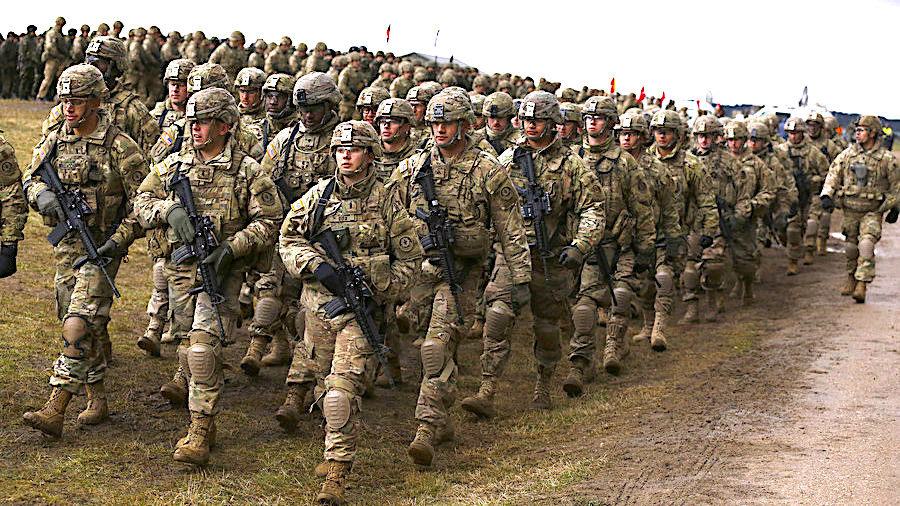
© Kacper Pempel / ReutersNATO troops near Orzysz, Poland
NATO significantly bolstered its military presence on Russia's Western border over the past five years, forcing Moscow to take retaliatory steps, Russia's Defense Minister Sergey Shoigu has said. Shoigu's remarks came during Friday's annual extended meeting of the Defense Ministry Board.
"Since 2012, the strength of NATO military contingents deployed at Russia's western borders has grown three times.
Four tactical groups of battalion level are a US armored brigade deployed in the Baltics and Poland, the staffs of international NATO divisions in Poland and Romania," Shoigu outlined.
The number of engagement-ready troops has grown even more, from 10 to 40 thousand, the minister said.
The military alliance has also
drastically scaled up its aerial and naval surveillance activities, according to Russia's defense chief.
Moscow has repeatedly criticized the NATO buildup, saying it's provocative while promising to respond accordingly.
"Over 30 drills are being held each year at Russia's western borders. Their scenarios are based on a military confrontation with our country," Shoigu told the Board. "We carefully watch every NATO exercise and take steps accordingly. In order to respond to the new threats and maintain the strategic balance we expanded the patrol areas of the long range aviation and of the navy ships deployment."
Russian long-range strategic aircraft undertook 178 patrol flights, while the Navy travelled over 670 times to "all the crucial regions of the world ocean" to demonstrate Russia's military presence, the minister said. One of the most important measures for strengthening Moscow's defensive readiness was the joint Russia-Belarus strategic exercise Zapad-2017, which took place in September.
"The troops showed the capability to fend off the possible aggression and localize an armed conflict in the western region," Shoigu said.
The war games, despite their defensive nature, were widely used by NATO officials and the media to fuel the "Russian aggression" narrative and to further justify NATO's buildup in Eastern Europe.The maneuvers prompted accusations that Russia had surpassed the declared number of troops participating, and even more alarming, claims that the drills were cover for an "invasion" into neighboring countries.
As the exercise successfully concluded, proving the fears to be unfounded, some politicians and military officials, especially those in Ukraine,
alleged that Moscow had secretly left troops behind in Belarus. Amid the scare, even NATO Secretary-General Jens Stoltenberg had to disprove the allegations, saying that NATO found no such evidence.In response to the Zapad drills - which involved some 12,700 troops, 70 military aircraft, 10 ships and some 680 ground vehicles - Poland hosted the so-called "national" Dragon 17 exercises, involving contingents from the US, the UK, Germany, Lithuania, Latvia, Slovakia, Italy, Bulgaria, Romania, Georgia and Ukraine. Notably, the number of troops involved in Dragon 17 by far exceeded those of the Zapad-2017 contingent, with some 17,000 servicemen and 3,500 hardware pieces involved.
Another massive military exercise played out in Sweden, simultaneously with the Zapad drills. The wargames, also touted as "national," involved some 20,000 personnel from a number of NATO countries. It was the largest drills Sweden had staged in two decades.
Comment: More uniforms, more equipment, more troops and more military industry benefits.